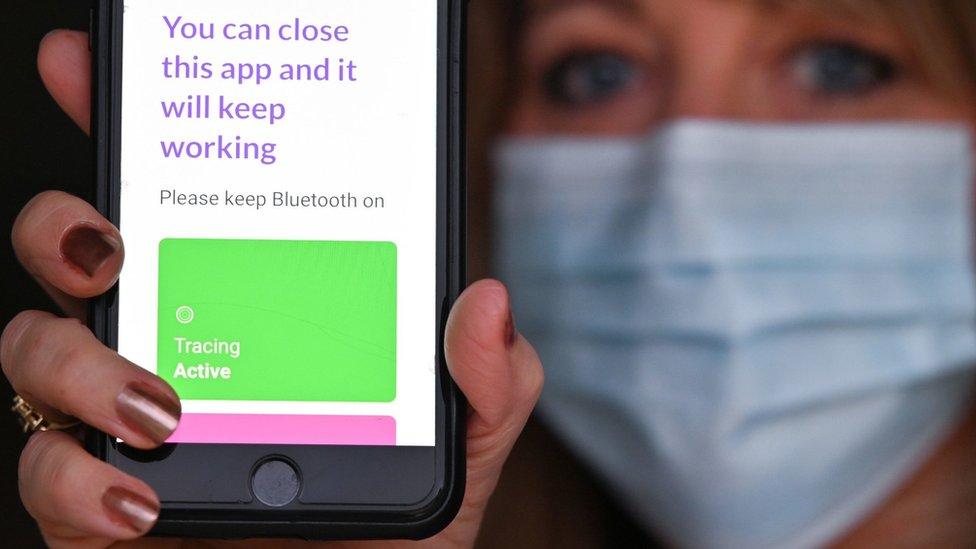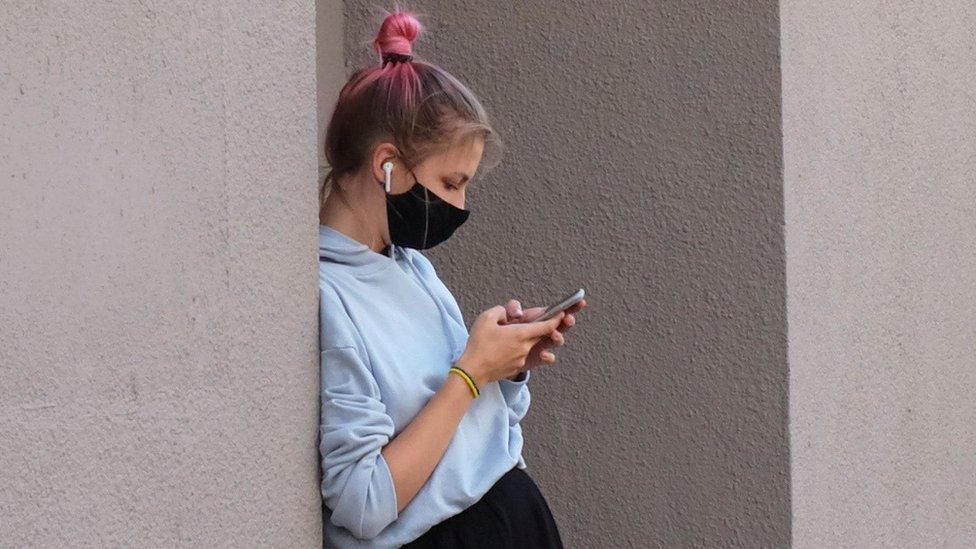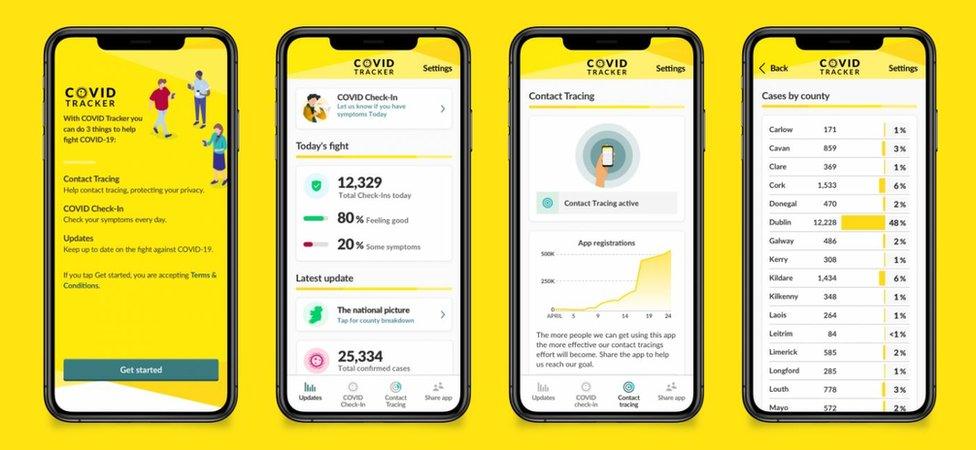Scotland's tracing app: What you need to know about Protect Scotland
- Published

Scotland now has its own proximity tracing app to help combat the spread of Covid-19. People with smartphones are being urged to download Protect Scotland, external as soon as possible to help boost the Test and Protect system.
How does it work?
The app uses Bluetooth technology to alert users if they have been in prolonged close contact with someone who has since tested positive for Covid-19.
When an individual tests positive for the virus they are contacted by a contact tracer via text, phone or email.
The contact tracer will ask them if they are an app user and if they are willing to use the app's upload function to anonymously alert close contacts.
If they agree, they'll be sent a unique code to their mobile which unlocks this function on the app.
By sharing their positive test result in this way it forms part of an anonymous database.
The app on other users' phones regularly checks this database to see if they have been in contact with an infected person.
A warning is automatically issued when a match is found. Users are then urged to self-isolate for 14 days.
Where can you get it?

Protect Scotland can be downloaded for free from Apple's App Store or Google Play.
On iPhones, the app will only work on the iOS 13 operating system, which can run on any models from the iPhone 6s onwards. Android users need to be running Android 6.0 or later.
Essentially, any phones released after 2015 should have the ability to run the app.
Is it confidential?
Yes. The app uses anonymous codes or "keys". These will be exchanged between phones via Bluetooth but they contain no personal data.
They may include some information about Bluetooth signal strength, which the app uses to estimate proximity, but they cannot be used to identify you.
Using the app is entirely voluntary and you don't have to enter any personal details to download or install it.
The decentralised approach is designed to maximise privacy. If you're using the app, your phone collects lots of anonymised keys from nearby users but it stores these locally on your device, rather than uploading them.
Your phone will check them against the database to see if any of these keys were "infected" but it won't upload any information without your permission.
The app includes a leave function which can be used at any time to delete all app data from the phone.
How does it tie in with Test and Protect?

Up until now contact tracing has been done manually using a method used for years to help control the spread of infectious diseases.
A person who is infected is interviewed over the phone to identify close contacts - people they have been within two metres of for a period of 15 minutes or more.
These close contacts are then phoned and given advice.
This will continue to be the main method of contact tracing, but the app is designed to reinforce the system.
What about false positives?
The app uses the same standard for a "close contact" - two metres for 15 minutes - as the Test and Protect teams.
Some users are advised to turn their phones off, or disable Bluetooth, in some circumstances. For example, these would include health or social care workers in clinical settings who are wearing medical grade PPE.
This is to stop these users being told to self-isolate when they were not at risk.
The developers say there is always a chance that false positives can be generated - such as through the wall of a house or flat - but the risk is "very low".
Health experts also argue that false positives also occur in manual test and trace with people being told to self-isolate when they are not infected.
How many people need to download the app for it to be effective?

The Scottish government has pointed to an Oxford University study, external, which claims that even with an uptake of just 15%, a contact tracing app can drive down infections by about 8% and deaths by about 6% - if it is part of a manual track and trace strategy.
In Scotland, 15% of the adult population equates to about 689,000 people. The app was downloaded in Scotland by more than 360,000 people in the first 24 hours.
Is this based on the Irish system?
Another contact tracing app being developed by the NHS in England ran into technical problems and is currently being tested following a revamp.
The app being adopted in Scotland is instead based on a system developed in Ireland by the software firm NearForm.
NearForm designed it using a toolkit made available to developers by Apple and Google
Not all the features on the app being used in Ireland will be available on the Scottish app.

The Irish version of the app includes a "Check-in" function so users can report Covid symptoms
For instance, Ireland's Covid Tracker includes an optional "Check-in" function which allows users to share with the health service if they are showing Covid symptoms.
NearForm's system has also been adopted in Northern Ireland.
In Scotland the app will focus solely on contact tracing and initially will not work outside the country.
The Scottish government said it anticipated Protect Scotland would work with equivalent apps in the Republic of Ireland, Northern Ireland and Gibraltar by the end of September.
Health authorities in Scotland will also continue to liaise with the UK and Welsh governments to ensure data sharing arrangements are considered when apps are available in England and Wales.
The app being developed by NHS England didn't initially use the Apple/Google toolkit, but that decision was reversed in June.